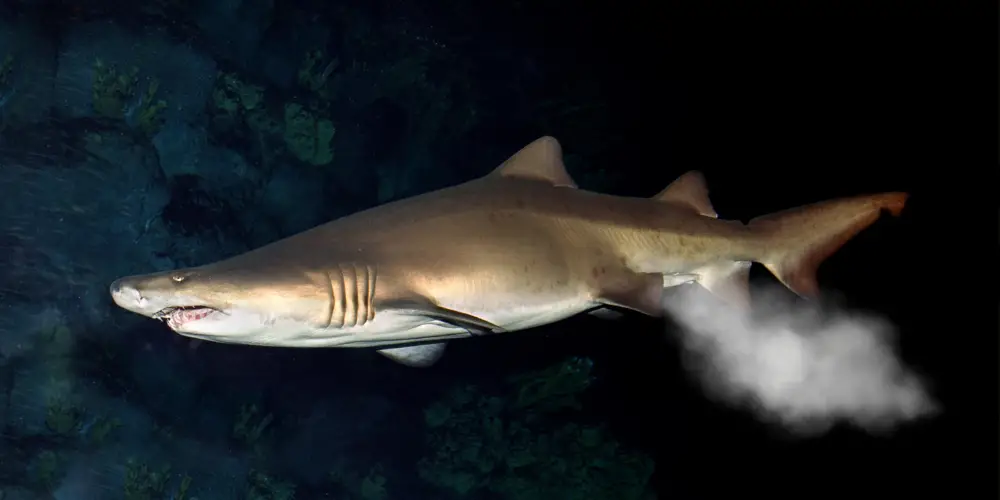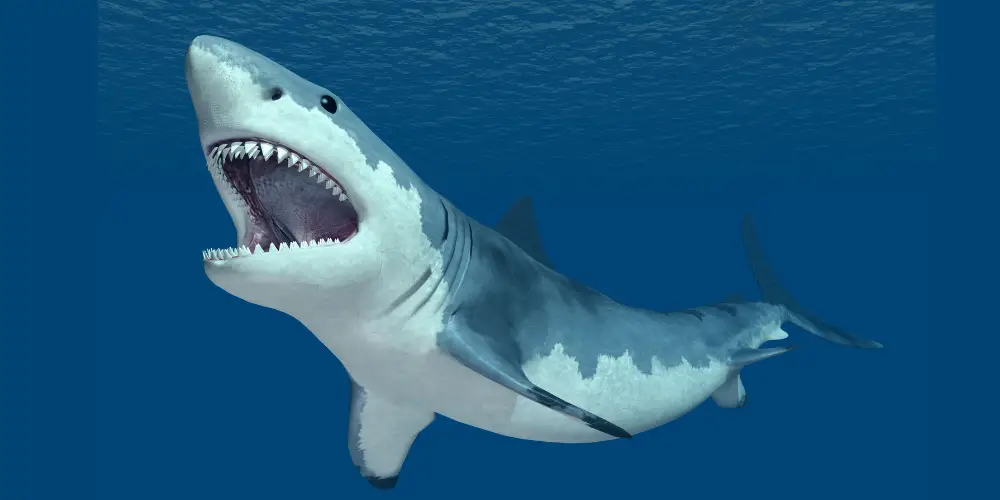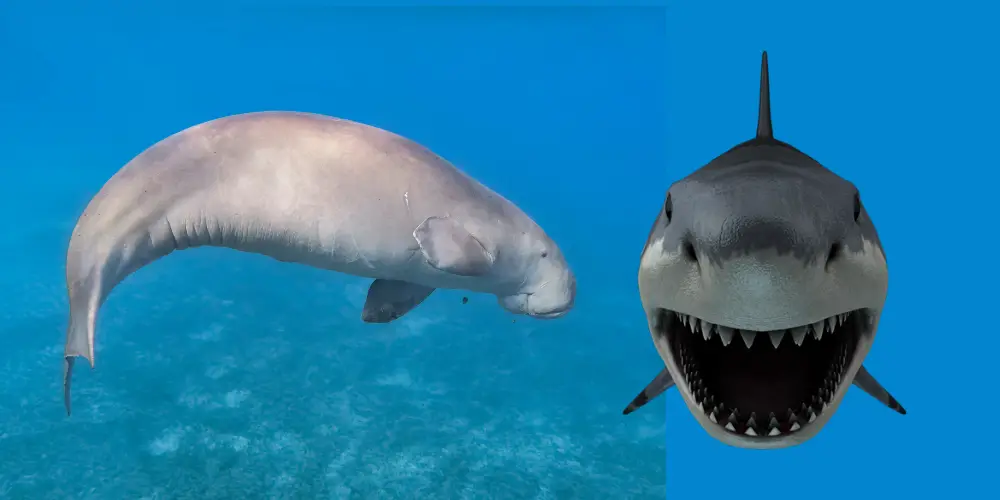There’s a surprising and smelly fact in zoology that you may not know – sharks, like humans, can pass gas!
While this topic might be unexpected or even considered humorous by some, understanding the peculiar ways that sharks manage gas is crucial for any shark lover or researcher.
So, without further ado, let’s answer the intriguing question, “How do sharks fart?”.
Sharks, particularly sand tiger sharks, control their buoyancy by gulping air at the water’s surface, which they store in their bodies. When they must dive quickly, they expel this stored gas, effectively ‘farting.’ This behavior isn’t common to all shark species.
Key Takeaways
- Sharks, including sand tiger sharks, can control their buoyancy by gulping air at the water’s surface and expelling it to dive quickly, a behavior crucial for survival.
- Gas formation in sharks after consuming protein-rich foods leads to gas accumulation, impacting buoyancy and navigation.
- The unique gas expulsion process in sharks is influenced by their diet, with protein-rich diets like tiger sharks resulting in more frequent gas expulsions for buoyancy adjustment.
- Not all sharks use farting for buoyancy regulation; many rely on their oily liver to float rather than sink.
- Sand tiger sharks have evolved a mechanism of gas storage and expulsion to rapidly adjust buoyancy, allowing them to navigate their underwater environment more effectively.
- Debunking myths: Not all sharks fart, and the greenish waste observed in shark defecation is not related to gas expulsion.
- Shark farts play a role in nutrient cycling and potential behavioral interactions in marine ecosystems, contributing to the broader understanding of these systems.
- Shark farts are odorless due to their diet and serve the practical purpose of buoyancy control rather than communication.
- Shark farts are a remarkable adaptation and illustrate the complexity of marine life.
- Some sharks fart to regulate buoyancy, a unique and interesting aspect of their biology.
The Science Behind Shark Farts
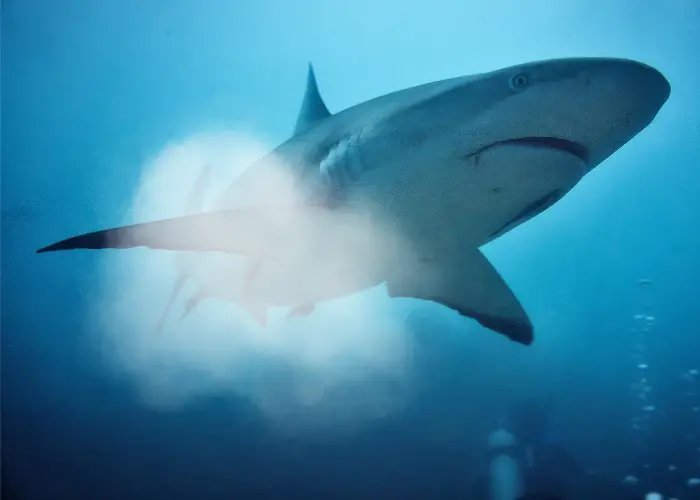
Shark Diet and Gas Production
When considering the diet of sharks, one may envision an array of marine fish, squids, and in some cases, larger mammals – a menu particularly applicable to apex predators like the great white shark.
Often overlooked is the process that ensues once the meal is consumed. Much like in humans and many other animals, the digestion of these protein-rich foods leads to gas formation within the shark’s body.
This process can result in a notable gas accumulation for species with a broad diet, such as tiger sharks.
Gas Buildup and Buoyancy
While gas buildup might be an inconvenience or source of amusement for terrestrial creatures, it serves a strategic function for marine animals such as sharks.
Controlling buoyancy is key in an environment where continuous movement is vital for survival.
Sharks, particularly sand tiger sharks, can gulp air from the water’s surface and store it within their bodies.
When they need to descend quickly, they expel this stored gas — in other words, they fart.
The release of gas influences their buoyancy; the more gas expelled, the faster they sink, facilitating their navigation through the ocean’s depths.
The Influence of Diet on Gas Expulsion
The significance of a shark’s diet in this unique gas expulsion process is significant.
A protein-rich diet, typical of tiger sharks, naturally produces more gas. This could result in more frequent gas expulsions or farts, with the feeding frequency correlating with the need to adjust buoyancy through gas expulsion.
Farting: A Unique Survival Mechanism
The process of farting in sharks is a nuanced biological phenomenon tailored to their marine environment.
Not all sharks may use farting as a mechanism to regulate their buoyancy. Most sharks, for instance, rely on their oily liver to float instead of sink.
However, it’s evident that for some species, like the sand tiger shark, farting plays a crucial role in their survival.
So, “How sharks fart” is much more straightforward. They don’t pass gas in the same way as terrestrial creatures; instead, they gulp air, convert it into gas during digestion, and then expel it when needed to balance their survival and underwater navigation.
It turns out the world of shark farting is not as straightforward as it initially appears.
Instead, it’s a complex interplay of biological processes, dietary influences, and survival instincts – another remarkable testament to the intriguing life of these marine creatures.
The Sand Shark: The Farting Shark
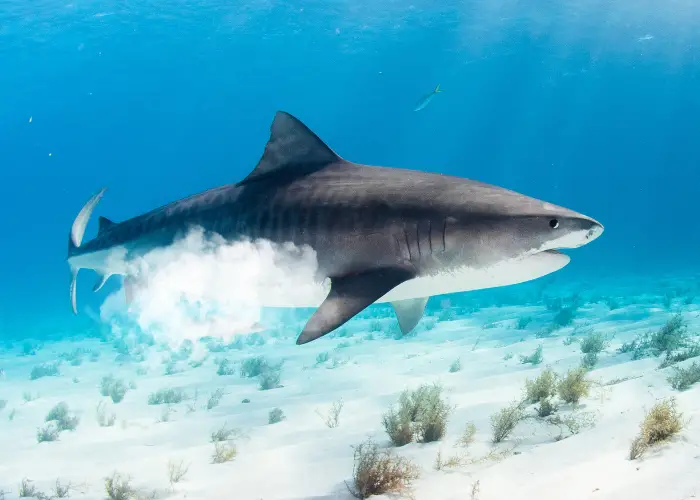
As you dive deeper into the underwater world of zoology, you might stumble upon a peculiar fact about one specific species of shark: the sand shark.
Also referred to as the sand tiger shark, this species has an exciting and somewhat unexpected claim to fame – it farts.
Yes, you read that right.
This marine creature, a powerful and fearsome predator in its own right, is known to expel gas in a way that’s strikingly similar to how humans and many animals do.
This intriguing behavior isn’t just random; it’s unique to tiger sharks and has a specific purpose in their survival strategy.
In the case of the sand tiger shark, passing gas is not about making a high-pitched underwater farting sound or creating a smelly atmosphere.
Instead, it’s about the critical function of adjusting buoyancy. These sharks have developed a special technique to navigate the depths of their ocean homes.
They gulp air from the water’s surface, trapping it inside their bodies. This air isn’t just sitting idle, though.
It is an internal flotation device, helping the shark stay buoyant and maneuver efficiently underwater.
However, there are times when a sand tiger shark needs to alter its buoyancy quickly, such as when it needs to dive deeper into the ocean’s depths in pursuit of prey or to avoid a predator.
This is when the trapped gas comes into play. The shark expels this gas – and yes, you can think of this as a fart.
By releasing the trapped air, they can quickly lose buoyancy and sink more rapidly, a crucial ability in their underwater environment.
This distinctive farting mechanism of the sand tiger shark highlights the intricate ways marine life has adapted to the unique challenges of their environments.
So while it might be a little amusing to think about a shark farting, remember that it’s a vital part of their survival strategy. They’re not just passing gas; they’re doing what they need to do to navigate their underwater world successfully.
The sand shark truly brings a whole new meaning to the term “survival of the fittest” – or perhaps, in this case, survival of the gassiest.
Debunking Myths About Sharks and Farts
In our quest to understand the intriguing topic of shark farts, it’s important to debunk some common myths that have somehow found their way into popular discourse. Here are a couple of misconceptions that need clearing up:
- All Sharks Fart: Not all sharks fart. It’s easy to imagine that every shark releases gas as we do, but that’s not the case. The sand tiger shark is known for its unique behavior of gulping air from the surface to control its buoyancy, which it later releases as farts. However, this behavior isn’t common among all species of sharks. Instead of farting, many of them rely on other mechanisms, such as their liver’s oil content, to maintain buoyancy.
- Green Shark Farts: Another myth is the idea of sharks farting green gas. This misunderstanding likely originates from observing the defecation process in sharks. Some of their dietary components may lead to greenish waste, but this is not gas; hence, it’s not a fart. Sharks’ expelled gas is similar to air and doesn’t come out as a cloud of green bubbles.
In understanding “how do sharks fart,” it’s crucial to separate fact from fiction. Debunking these myths allows us to appreciate the rich diversity in shark biology and their fascinating adaptations to life in the oceans.
So, while the idea of all sharks leaving a trail of green bubbles might be entertaining, the reality is far more complex and exciting.
The Impact of Shark Farts on the Ecosystem
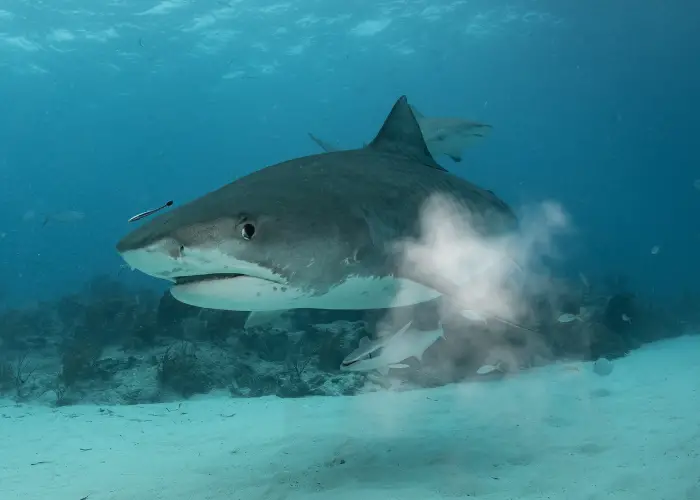
At first glance, the topic of shark farts may seem more suited to a humorous trivia night than a serious discussion about marine ecosystems.
However, the reality is that even these seemingly trivial aspects of a shark’s biology can significantly impact the environment around them.
The gas bubbles released by farting sharks, particularly those from the sand tiger shark species, are not just the punchline to a juvenile joke. They play an integral role in the ocean’s often-overlooked nutrient cycling process.
These sharks release gas into the water and expel various organic materials and compounds. These can nourish smaller organisms, contributing to the nutrient cycle vital for marine life’s health and diversity.
Beyond this, there is also the possibility that shark farts could influence the behavior of other marine creatures. These gas bubbles could serve as signals or cues for other animals, similar to how some fish use bubbles for communication or as part of mating rituals.
For instance, the bubbles might alert other creatures to the shark’s presence, triggering predator avoidance behaviors. Alternatively, they could attract scavengers looking to capitalize on the leftovers from the shark’s meals.
However, this aspect of shark farts is still largely unexplored, and more research is necessary to fully understand these potential behavioral interactions.
Therefore, “How do sharks fart” is a whimsical curiosity and a line of inquiry with substantial ecological implications.
Understanding the seemingly insignificant aspects of shark behavior, such as farting, could help scientists gain a more comprehensive picture of marine ecosystems and their myriad interactions.
It’s a testament to life’s complex and interconnected nature in our oceans, where even the most straightforward action can influence a vast network of organisms.
Fun Facts About Shark Farts
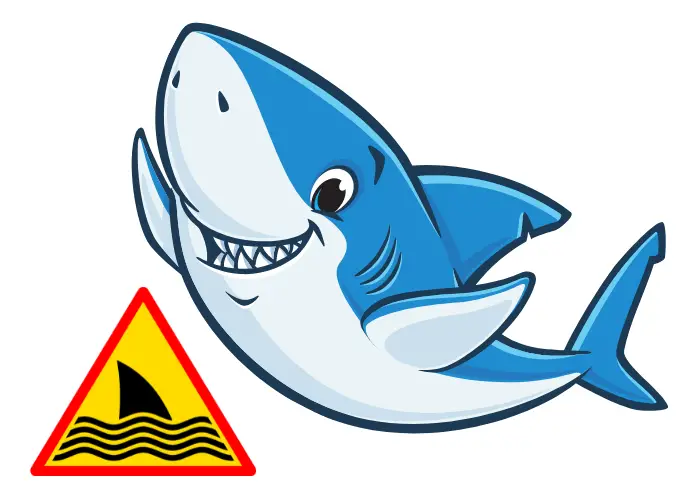
Delving into the lighter side of shark biology, here are some interesting and perhaps surprising facts about shark farts:
- Odorless Gas: Despite the stigma surrounding farts, shark farts do not stink! The gas they expel is almost odorless, thanks to their diet, which primarily consists of fish. The absence of plant matter in their diet, which in terrestrial animals often leads to methane production (and the associated smell), means that shark farts are comparatively smell-free!
- Silent but Important: Unlike some other fish species, like the herring, shark farts are not used for communication. Herrings are known for their high-pitched farts, which they use to communicate in dark waters. Sharks, however, keep it simple – their farts are silent and serve a more practical purpose related to buoyancy control rather than social interaction.
- No Green Clouds: You might be relieved that sharks do not release green gas bubbles when they fart. The myth of green shark farts likely arose from misinterpreting the shark’s defecation process, which can sometimes contain greenish components.
So, the next time you ask, “How do sharks fart” remember that it’s quite different from the comedic image you might have pictured.
Shark farts are silent and odorless and play an important role in their survival – a remarkable testament to the diverse adaptations of these incredible marine creatures.
Final Thoughts
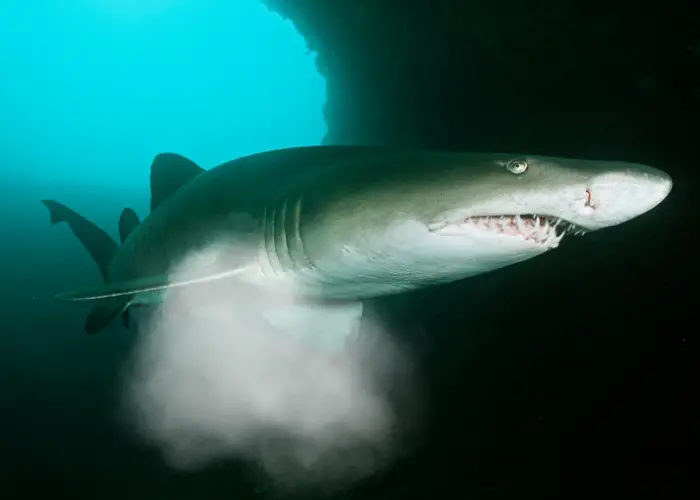
Through our exploration, we’ve discovered that some sharks fart, primarily to regulate their buoyancy.
This process is unique, non-smelly, and offers a captivating glimpse into shark biology.
Although delving into the world of shark farts might have been an unexpected journey, it’s clear that even the seemingly unglamorous aspects of these incredible creatures warrant attention and study.
For all the shark enthusiasts, share this fascinating insight about the unexpected truth of shark farts.
Continue to quench your thirst for knowledge about these remarkable creatures – one shark fart at a time!
- National Aquarium. (n.d.). Sand Tiger Shark. Retrieved July 28, 2023, from https://aqua.org/explore/animals/sand-tiger-shark
- Sand shark. (2023, May 28). In Wikipedia. https://en.wikipedia.org/wiki/Sand_shark

